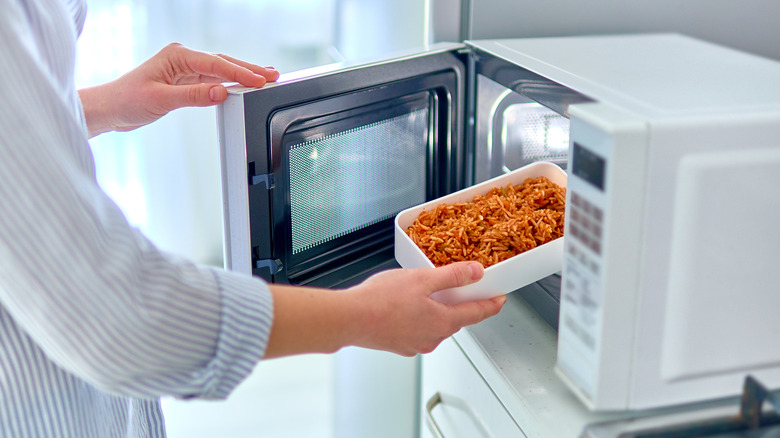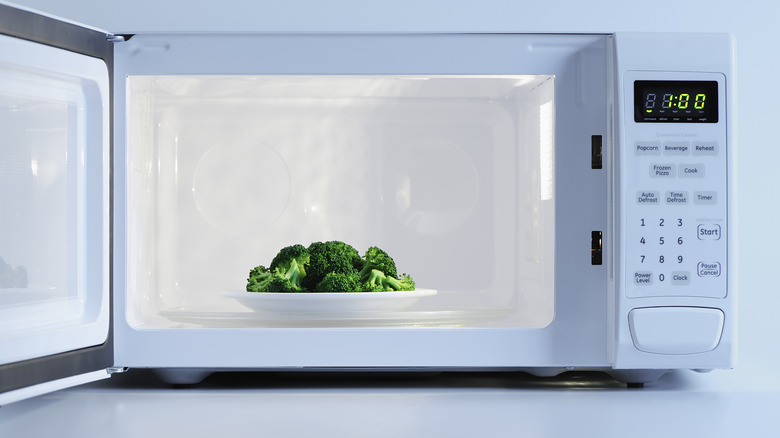The Microwave Myth You Definitely Need To Stop Believing
While we have several options for making meals more quickly nowadays, including Instant Pots, convection ovens, and air fryers, microwave ovens are still the kitchen appliance most people opt for when they're looking for a quick meal. The U.S. Energy Information Administration released a survey in 2020 that showed that most U.S. homes have at least one microwave. There have been many myths about microwaves over the decades, and some persist today. One of the biggest is the idea that microwaving will automatically kill any bacteria in your food. According to the Hygiene Food Safety site, this is not always the case.
We've all been told that the best way to kill bacteria is to cook foods to a safe internal temperature, but that's not quite so easy with microwaves. Microwaves work by creating waves that bombard the food from the edges and the top and bottom, bouncing around the interior and hitting the food as they go. In this way, the food cooks from the outside in and it can be difficult to ensure an even temperature all the way through. This is especially true of thick dense foods or irregularly shaped foods, which are likely to cook unevenly, leaving some uncooked spots inside. It's always recommended to stir, flip, or rotate foods partway through the cooking process, to try to get to those cold spots that the bacteria are hiding in. And always remember to defrost your food thoroughly before microwaving.
There are several ways to help food cook evenly
You may be surprised to realize that you've been using your microwave all wrong when it comes to cooking food evenly. There are several precautions you can take to get to those bacteria-laden pockets. It's best to choose a lower-power setting so the heat can get to the food's center before the outside is overcooked. Also, use a food thermometer to check the internal temperature in several spots to make sure the item is thoroughly cooked.
The corners in square or rectangular containers will cook faster because they receive more energy, so use a round container to cook more evenly. You can also add a little bit of water. If you've noticed that your soup cooks faster than thicker, dryer foods, it has to do with the way microwaves cook. The heat that is cooking your food is created in part by vibrating water molecules. The more liquid in your food, the faster it will cook. And for foods that you can't add water to, remember to preheat.
It's also important to remember that the walls of the microwave themselves don't get heated, and any splatters or drips can become breeding grounds for bacteria, so be sure to keep your microwave as clean as possible.
While there are some foods you shouldn't reheat in the microwave, as long as you take steps to ensure your food is evenly cooked, it's possible to destroy the bacteria lurking in the cold spots in your food.

